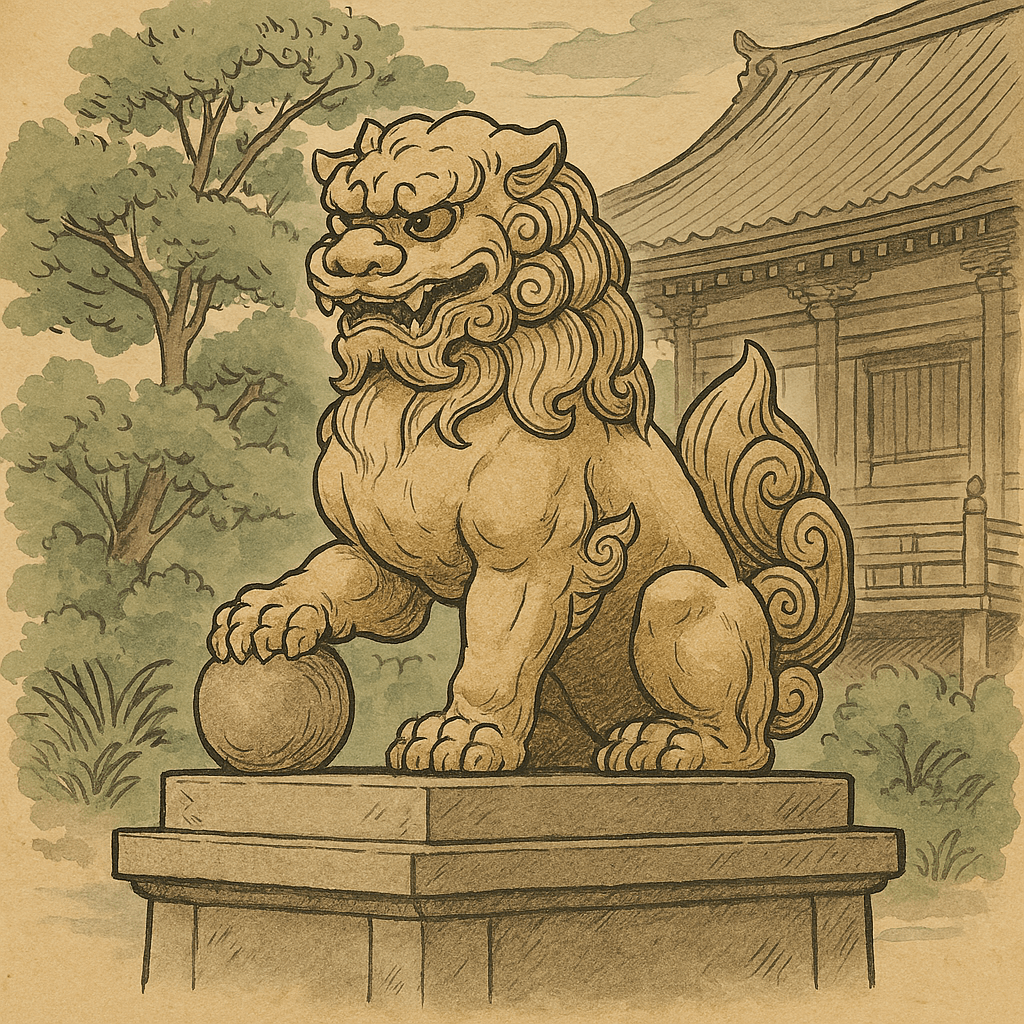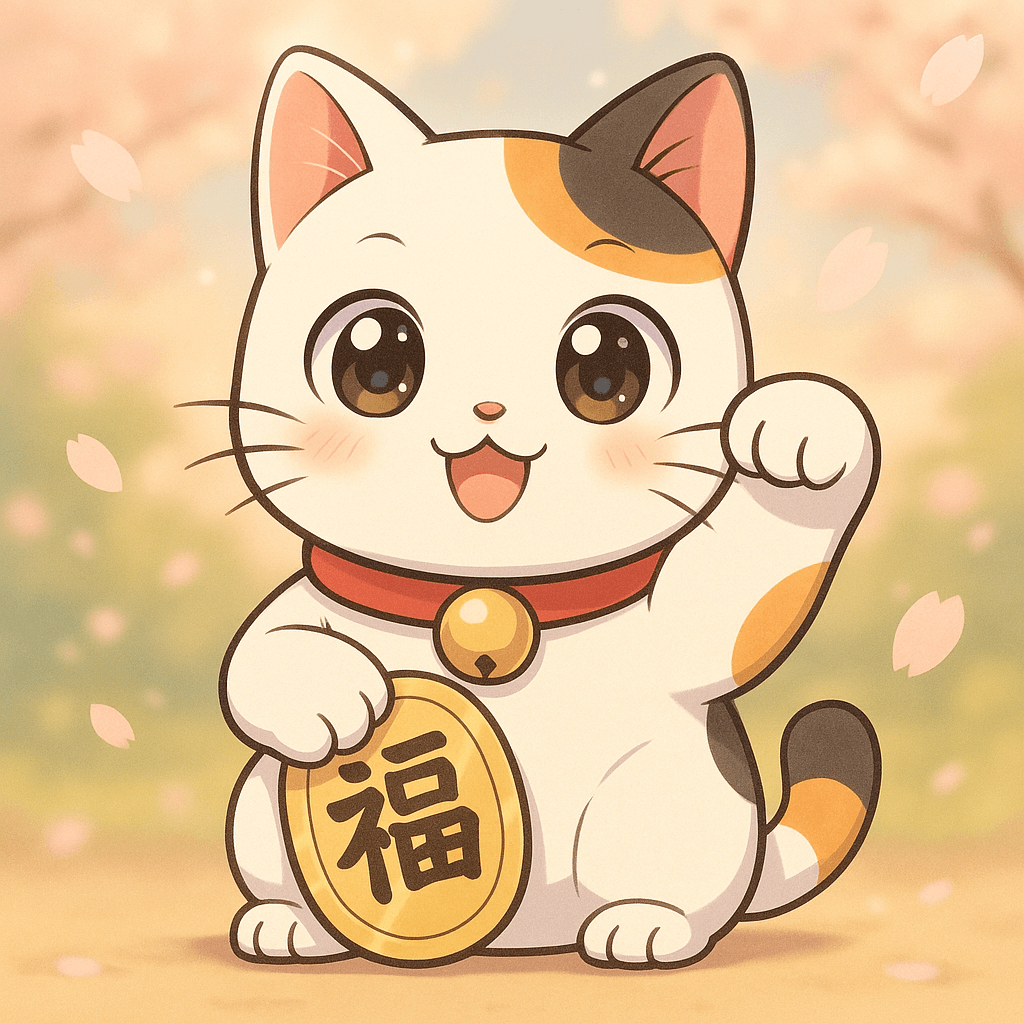
Komainu – Japanese Guardian Lions. Symbolism, History, and Cultural Meaning
Komainu , also known as "temple lions" or "lion dogs," are mythical creatures that have been present in Japanese culture for centuries. They are an integral part of traditional religious architecture in Japan, and their role is to protect sacred sites from evil spirits. These majestic figures, usually placed in pairs at the entrances to Shinto and Buddhist temples, have both spiritual and aesthetic significance.
In this article, we'll explore the history of komainu, their symbolism, appearance, origins, and the role they play in contemporary Japanese culture. For lovers of Japanese aesthetics, culture, and spirituality, this is a must-read.
The origin and history of the komainu
Komainu have their origins in ancient China and India, from where they reached Japan via Korea. These cultures featured mythical lions (e.g., the Chinese "shi" or the Hindu "simha"), symbolizing strength and protection. In Japan, they were originally known as "karajishi" (kara = "Chinese," jishi = "lion"), before evolving into "komainu" (Korean dogs).
The oldest surviving komainu sculptures date back to the 8th century (Nara period) and were found primarily inside temples. From the 11th century, they began to be placed in pairs at the entrances to Shinto and Buddhist shrines, where they served as guardians. Over time, their forms began to take on increasingly stylized shapes, and their symbolism acquired new nuances.
In some cases, komainu were combined with other guardians, such as dragons or tennō, creating a complex system of spiritual protection around sacred places.
During the Edo period (1603–1868), komainu became an integral part of Shinto architecture. Experiments with materials began during this period, with figures being created from wood, bronze, and even porcelain. These were often lavishly decorated and personalized by local artisans.
Appearance and symbolism
Komainu always come in pairs – usually one with its mouth open, the other with its mouth closed:
-
Open mouth (A) – pronounces the first syllable of the Sanskrit alphabet (“a”) – a symbol of beginning.
-
Closed lips (Un) – pronounce the last syllable (“un”) – a symbol of the end.
Together, they create the concept of "a-un ," signifying the entirety of existence—from birth to death. Similar symbolism is found in Hindu mandalas and Buddhist mantras.
Although they resemble lions, komainu have canine characteristics, which in Japanese culture emphasize their loyalty and vigilance. Their role is to ward off demons and provide spiritual protection.
They are often found with decorations such as bells, scarves (a symbol of sacrifice and dedication), as well as stylized scales or manes referring to the dragon's power.
Some sculptures have a sphere in their mouth, symbolizing the universe, or hold it under their paw, as a sign of their control over the energy of the world. Other versions show the komainu with an open paw, in a gesture of blessing or alert readiness.
Where can you see komainu?
Most often we encounter them:
-
At the entrances to Shintō temples (e.g. Meiji Jingu in Tokyo),
-
In Buddhist temple complexes ,
-
In the grounds of castles and historic gardens ,
-
On torii – traditional gates leading to holy places.
Nowadays, komainu also appear as:
-
figurines in zen gardens,
-
symbols on clothing and accessories,
-
motifs in tattoo art,
-
pop culture elements (anime, manga, games),
-
graphics, logos and mascots promoting local culture.
Some homes place miniature komainu on either side of the entrance as a form of symbolic protection, often accompanied by bonsai plants or stone lanterns.
In cities like Kyoto, Nara, and Kamakura, many komainu have their own names and even local legends. Some are considered miraculous—bringing good luck in love, health, or finances if touched or offered in their presence.
Interesting facts about komainu
-
In some regions of Japan, komainu are called "shishi" (lion), although they differ visually from Chinese lions.
-
There are versions of komainu with horns – the so-called "shisa" – popular in Okinawa, which combine the features of lions and dragons.
-
Komainu are also used as a home talisman – miniature figurines that protect the home from misfortune.
-
Traditionally carved from stone, but wooden, metal and ceramic versions are also found.
-
In some temples, one komainu has an open mouth and holds a ball, while the other has a closed mouth and an open paw, symbolizing the balance between having and letting go.
-
Komainu is a frequent topic of art workshops – from sculpture to origami to ceramics – as a form of dialogue with the spiritual heritage of Japan.
Komainu and the present day
Today, komainu are not only a relic of the past but also an inspiration for contemporary design, illustration, graphics, and fashion. Their powerful symbolism makes them a timeless motif of protection, strength, loyalty, and spiritual purity.
In homes, gardens, and Japanese-inspired interiors, miniature komainu can serve not only a decorative purpose but also a symbolic one, as guardians of harmony and peace. They are also a common motif in Japanese-style garden architecture and meditation spaces.
Komainu are also increasingly being used in branding projects, for example, by companies involved in matcha tea, calligraphy, and Zen art, where they represent a commitment to tradition and quality. In the fashion world, komainu are appearing as embroidery on kimonos, jewelry pieces, and even irezumi-style tattoos.
In popular culture, komainu influences can be found in video games (e.g., "Okami," "Nioh," "Ghost of Tsushima") and animated films (e.g., Studio Ghibli productions). Contemporary interpretations often combine a mystical nature with a modern aesthetic.
Summary
Komainu are not just guardian sculptures from the past. They are an expression of Japanese culture's deep connection with spirituality, protection, and aesthetics. Today, as centuries ago, they serve as a reminder of the need for balance, respect for the sacred, and the need for spiritual protection.
If you're inspired by Japanese culture and want to bring its spirit into your home, the komainu is a timeless symbol of power, loyalty, and spiritual purity. It's also a perfect subject for exploring Japanese mythology, art, and symbolism—full of mystery, beauty, and power.




 https://petto.com.pl
https://petto.com.pl